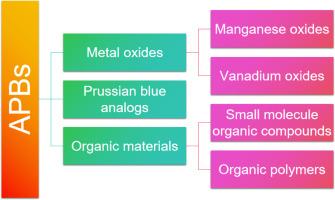水溶液质子电池正极材料的研究进展
IF 5.7
3区 材料科学
Q2 MATERIALS SCIENCE, MULTIDISCIPLINARY
引用次数: 0
摘要
水溶液质子(氢离子)电池作为锂离子电池最有前途的替代品之一,近年来引起了人们的广泛关注。然而,阴极材料的发展缓慢在很大程度上制约了apb的发展。综述了金属氧化物、普鲁士蓝类似物和有机材料等APB正极材料的最新研究进展。这些阴极材料的电化学特性——包括电荷存储机制、容量、速率性能和循环稳定性——被识别和分析,从而开发出适合实际应用的高性能apb。材料结构和质子动力学之间错综复杂的相互作用进行了彻底的研究,揭示了纳米结构工程,杂原子掺杂和战略性材料复合如何导致前所未有的性能增强。最后简要介绍了APB正极材料的技术进展、面临的科学挑战和未来的研究机遇。并提出了提高其电化学性能的策略,为下一阶段的APB研究提供了见解和指导。本文章由计算机程序翻译,如有差异,请以英文原文为准。

Advancements in cathode materials for aqueous proton batteries
Aqueous proton (hydrogen-ion) batteries (APBs) have attracted significant attention recently as one of the most promising alternatives to lithium-ion batteries. However, the advancement of APBs is largely constrained by the slow development of cathode materials. This review summarizes the latest progress in APB cathode materials, including metal oxides, Prussian blue analogs, and organic materials. The electrochemical properties of these reported cathode materials—including charge storage mechanisms, capacity, rate performance, and cycling stability—are identified and analyzed to enable the development of high-performance APBs suitable for practical applications. The intricate interplay between material structures and proton dynamics is thoroughly examined, revealing how nanostructure engineering, heteroatom doping, and strategic material compositing can lead to unprecedented performance enhancements. Finally, the technological advancements, scientific challenges, and future research opportunities of APB cathode materials are briefly reviewed. Additionally, strategies to enhance their electrochemical performance are proposed, providing insights and guidance for the next phase of APB research.
求助全文
通过发布文献求助,成功后即可免费获取论文全文。
去求助
来源期刊

Materials Research Bulletin
工程技术-材料科学:综合
CiteScore
9.80
自引率
5.60%
发文量
372
审稿时长
42 days
期刊介绍:
Materials Research Bulletin is an international journal reporting high-impact research on processing-structure-property relationships in functional materials and nanomaterials with interesting electronic, magnetic, optical, thermal, mechanical or catalytic properties. Papers purely on thermodynamics or theoretical calculations (e.g., density functional theory) do not fall within the scope of the journal unless they also demonstrate a clear link to physical properties. Topics covered include functional materials (e.g., dielectrics, pyroelectrics, piezoelectrics, ferroelectrics, relaxors, thermoelectrics, etc.); electrochemistry and solid-state ionics (e.g., photovoltaics, batteries, sensors, and fuel cells); nanomaterials, graphene, and nanocomposites; luminescence and photocatalysis; crystal-structure and defect-structure analysis; novel electronics; non-crystalline solids; flexible electronics; protein-material interactions; and polymeric ion-exchange membranes.
 求助内容:
求助内容: 应助结果提醒方式:
应助结果提醒方式:


